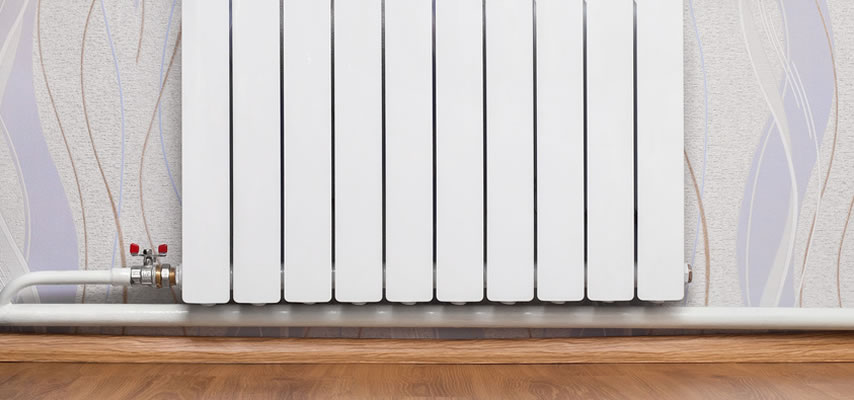Zoned heating describes controlling your home’s heating system to direct heat to different zones. These zones can be specific rooms, groups of rooms, entire floors, or a combination of any of those. Zoned heating is a great way to save on utility bills by turning down the heat for the entire house while increasing your comfort by being able to keep the room you are using at a higher temperature. Here are some of the systems that can be used in a zoned heating setup:
Hydronic Heating Systems
Hydronic heating systems heat your home by circulating near boiling water through pipes and into cast iron radiators or baseboard heaters throughout your home. Hydronic heating systems can be easily zoned since the pipes leading to each area of your home can be set up to different levels of heating with their own thermostat.
Electric Baseboard Heaters
Electric baseboard heaters are similar to hydronic systems in that they have radiators throughout the house, in this case along the baseboard, but instead of hot water flowing from a central furnace, electric baseboard heaters directly draw electricity to create heat. New baseboard heaters with separate temperature controls for each area have a higher initial cost than units with a single temperature control for the whole house, but the long-term savings should offset this cost. You can also upgrade your existing baseboard heaters with separate temperature controls if they are otherwise in good working order.
Heat Pumps
An electric forced air system that provides heat, and usually cooling as well, through a duct system is called a heat pump. Many people confuse them with central air conditioners. Heat pumps can be zoned, but typically aren’t because when new homes are built, the builder seeks to lower costs in any way possible.
In order to zone a heat pump, substantial modifications will need to be made to the duct system because heat pump zoning works by opening and closing ducts. The opening and closing is controlled by a thermostat located in each zone to allow one central system to reach as many different temperatures as there are zones. This is an expensive modification, but will also bring significant long term savings because of the high cost of electric heat.
Furnaces
Like heat pumps, forced air furnaces blow heated air through your home’s ductwork, but are fueled by oil or natural gas. Zoning a furnace heating system requires the same duct modifications as a heat pump heating system. Professional installation is required because furnace motors are especially prone to damage by excessive air pressure caused by the closing of different sections of ducts.
Ductless Systems
Ductless systems offer more flexibility than larger heating systems. Instead of one central heater, they can be spread throughout your entire home or placed only in areas that need additional heat such as the kitchen-to-garage passageway, in a front vestibule, or in a mud room. Each ductless system operates independently, so they are a natural fit for a zoned heating setup. You can either use them as the sole source of your home’s heat or to provide a boost in certain areas over a base level of heating provided by a central hydronic or forced air system.
Space Heaters
Space heaters usually run on electricity, but models using natural gas, propane, or kerosene are also available. Sizes range from small desk heaters to heaters designed to warm entire rooms. Electric heat is the most expensive heat source, and most space heaters of any type aren’t highly efficient, so they are only cost-effective when used to provide additional heat to a small area. They also must be placed away from walls and furniture to avoid a fire risk, which then creates a tripping hazard or just detracts from your room’s appearance. In addition, fuel based space heaters require ventilation to avoid carbon monoxide poisoning.

